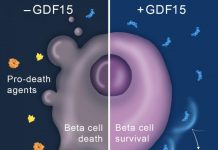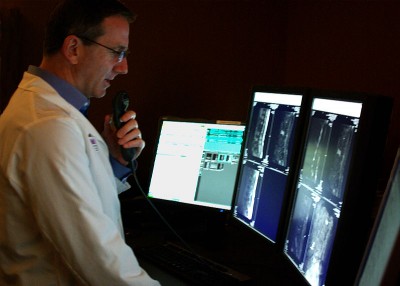Pittsburgh, April 2003 � Millions of people suffering from diabetes mellitus may be spared the ordeal of pricking their fingers several times a day to test blood sugar levels, thanks to a breakthrough by University of Pittsburgh researchers who have developed a non-invasive method to measure the glucose level in bodily fluids.
Researchers Sanford A. Asher, Ph.D., professor of chemistry in the faculty and College of Arts and Sciences, and David Finegold, M.D., professor of pediatrics in the School of Medicine, created a thin plastic sensor that changes color based on the concentrations of glucose.
The sensor material, which would be worn like a contact lens, was described in a paper published in the online version of Analytical Chemistry on April 11. The paper is scheduled to be published in the print version of Analytical Chemistry, a publication of the American Chemical Society, on May 1.
"There has been a increasing demand for continuous, non-invasive glucose monitoring due to the increasing number of people diagnosed with diabetes mellitus and the recognition that the long-term outcome of these patients can be dramatically improved by careful glucose monitoring and control," said Dr. Asher.
"The current method of testing glucose in diabetes patients-by drawing blood from a finger prick-is uncomfortable and is dependent on patient skill and compliance for regular testing," said Dr. Finegold.
Continue Reading Below ↓↓↓
The researchers plan to embed the sensing material into contact lenses worn in the patients' eyes. Patients will determine their glucose levels by looking into a mirror-similar to women's makeup compact mirrors, but with a color chart to indicate glucose concentrations-to compare the color of the sensing material with the chart.
The sensor will change from red, which indicates dangerously low glucose concentrations, to violet, which will indicate dangerously high glucose concentrations. When the glucose level is normal, the sensor will be green. The researchers are still determining the number of detectable gradations, but expect that it may be as high as the finger stick meters currently provide.
The University of Pittsburgh, which owns this patented technology, has licensed this technology to a new startup company that will engineer the material and commercialize it. The researchers believe the product is at least a year from being tested in humans. The researchers expect that their technology would be able to be incorporated into currently available commercial contact lenses, which would be replaced weekly.
Source: University of Pittsburgh Medical Center










